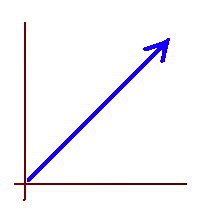A classic question about higher dimensions
Last week I had a tutoring session with a college student I help with his Advanced Calculus class. We did mostly exercises on line integrals, integrating functions of two variables along paths in the XY plane. After that, near the end of the hour, my student asked me some questions on Linear Algebra. He wanted to clarify some details about the dimension of vector sub-spaces spanned by finite sets of vectors, related to whether the spanning set was linearly dependent or independent. We looked at a couple of examples in the XYZ three-dimensional space. That was enough to answer his questions on that particular topic but then he asked me something to the effect of: “How can we visualize a four-dimensional space?” This is a classic question many students ask themselves when taking classes like Linear Algebra, Advanced Calculus, and other, more advanced math classes. There are some videos about projections of four-dimensional objects onto the three-dimensional space. Some mathematicians do specialized work on the geometry of four-dimensional spaces but I remember relatively early on in my math studies I gave up on trying to visualize a four-dimensional space. I have no problem working out abstract math proofs and formulas about objects in many dimensions, even an infinite number of dimensions. When doing such exercises I construct visual images to help me solve these problems but said images are always two-dimensional, or at most three-dimensional, not multi-dimensional. They are just schematic representations of the concepts at hand. I never (not any more, not in a long time) try to actually imagine how a four-dimensional space would “really” look like if we could move around in it. So, when my student asked me this question I was kind of hesitant in my answer. I said: “Well, that thing of trying to visualize or imagine a four-dimensional space is complicated. We have no real experience of such a thing. Spaces of dimension higher than three are all in the dark. The space we live in is only three-dimensional. The space we believe we see, is just an illusion created by our brains but it is the best representation our brain can come up with, based on the visual information collected as light by our flat retina. It is one reconstruction, or a representation of our three-dimensional world, and our brain spends a lot of time, energy, and resources reproducing these three dimensions because that is the world in which we have to survive.” Then my student said: “So, do not think about four dimensions?” And I said: “Think about four dimensions, just do not try to ‘see’ them.” That was the end of it but somehow I was left with the feeling there was something not quite right with my answer. Why did my student interpret my answer as an admonition “not to think about four dimensions?” Did I make it sound too hard, too complicated? I ended up thinking: “Why not?” Maybe there is a way to build the specific kind of imagination that would allow us to represent, in a visually realistic way (whatever that means), the experience of how it would be like to see in four dimensions with our two-dimensional retinas. Just maybe. What do you think? If you are a computer programmer reading this, please contact me so we can see about the possibility of doing a project on these ideas.
Golden iteration
-
The expression converges to the golden ratio φ. Another way to say this is
that the sequence defined by x0 = 1 and for n > 0 converges to φ. This post
wi...
1 day ago




